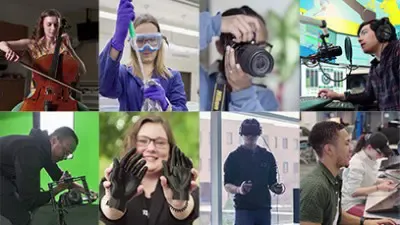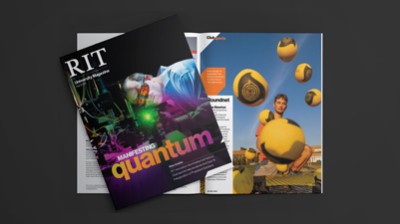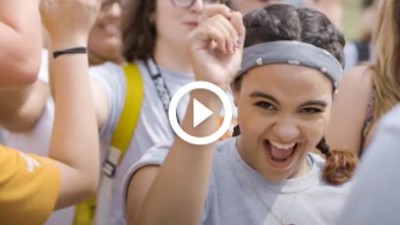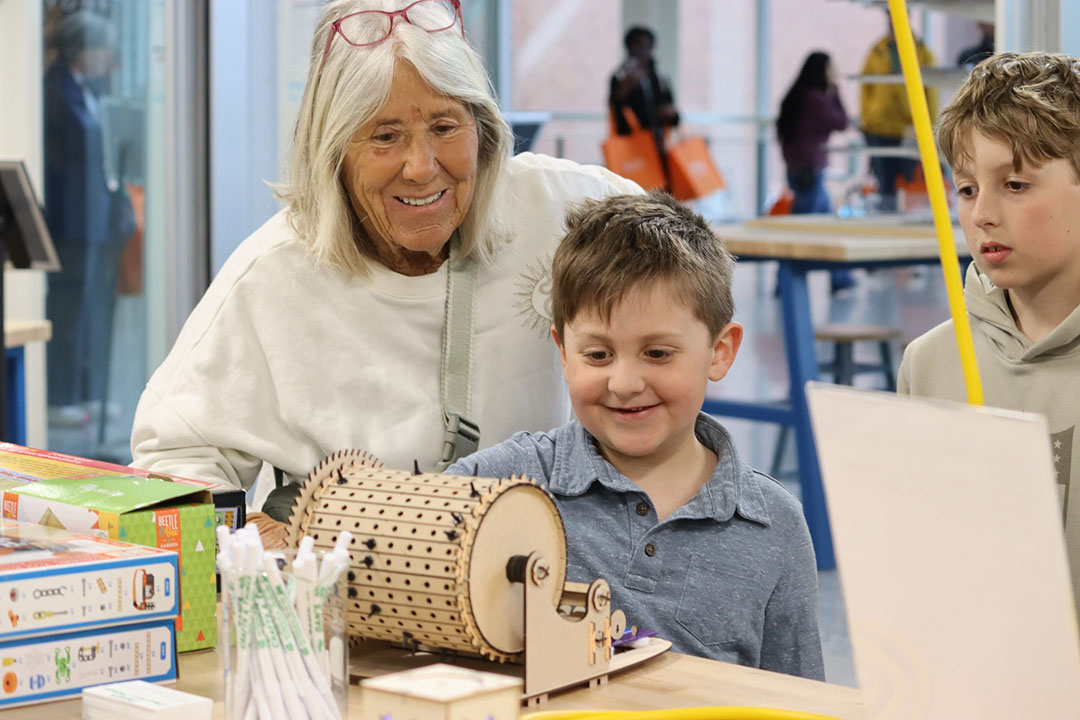Senior Lecturer inspires next generation of scientists with Interactive Computing Zoo
Exploration of historical technologies used in computing educates and engages visitors at Imagine RIT
Thomas Kinsman
Visitors to Imagine RIT engage with music making machine demo at Imagine RIT's Interactive Computing Zoo.
Every year, Thomas Kinsman, a senior lecturer in RIT’s department of computer science, dedicates months of his time building demos for an “Interactive Computing Zoo” to engage and educate visitors to Imagine RIT. This year, the zoo was featured in the General Makerspace of the SHED, where Kinsman and team hosted more than 2,000 visitors for an exploration of historical technologies used in computing.
“These interactions often result in young students exclaiming that they want to come to RIT,” says Kinsman. “More importantly, it puts the idea in kids’ heads that they might want to learn computer science, or engineering, or industrial design, or another field at RIT.”
One key lesson of the exhibit is that computing does not need to be digital. This year’s zoo featured demonstrations of mechanical computing: no computer necessary. Visitors were able to interact with demos consisting of pulleys, gears, and more, as they learned about historical technologies used in computing before the invention of the transistor.
Examples included gear models of the solar system, a computer binary search algorithm used to find the one bad battery in a set of 16 batteries, a simple mechanical computer that makes music, and an exhibit close to Kinsman’s heart: the Scotch yolk mechanical demo. “It’s the same demo I experienced 60 years ago that helped lead to my interest in STEM,” says Kinsman.
Throughout the zoo, Kinsman also displays inspirational lessons for students. One example reads: “You will see failures here. We learn from failures even if we do not usually show them off.” The message is displayed alongside a failed attempt to make a gear with a laser cutter in which the wood overheats and becomes charred. A follow-up attempt used a Computer Numerical Control (CNC) machine to create the gears successfully.
In addition to gears, computing can be done using pulleys. To demonstrate this, Kinsman built a Kinetic Artwork piece he calls “The Gonkulator.” It uses contrasting woods (light and dark) so that children can see the pulleys turn. Gears tend to turn against each other, while pulleys tend to turn with each other. The pulleys were made using tools in RIT’s School for American Crafts.
The zoo is a significant labor of love for Kinsman, who coordinated more than 40 student volunteers and four faculty members to bring the exhibit to life and help guide visitors. He has been doing this for over ten years. Kinsman’s passion for inspiring future generations of scientists is on display at every turn, as he helped young visitors unlock lessons from each of the demos. In the classroom, Kinsman teaches a range of courses that include Big Data Analytics and Advanced Computer Vision. He is an expert in data mining, machine learning, computer vision, computer graphics and more.
Gonkulator in motion
A video of the "Gonkulator" pully system demonstrating a primitive form of computing.












